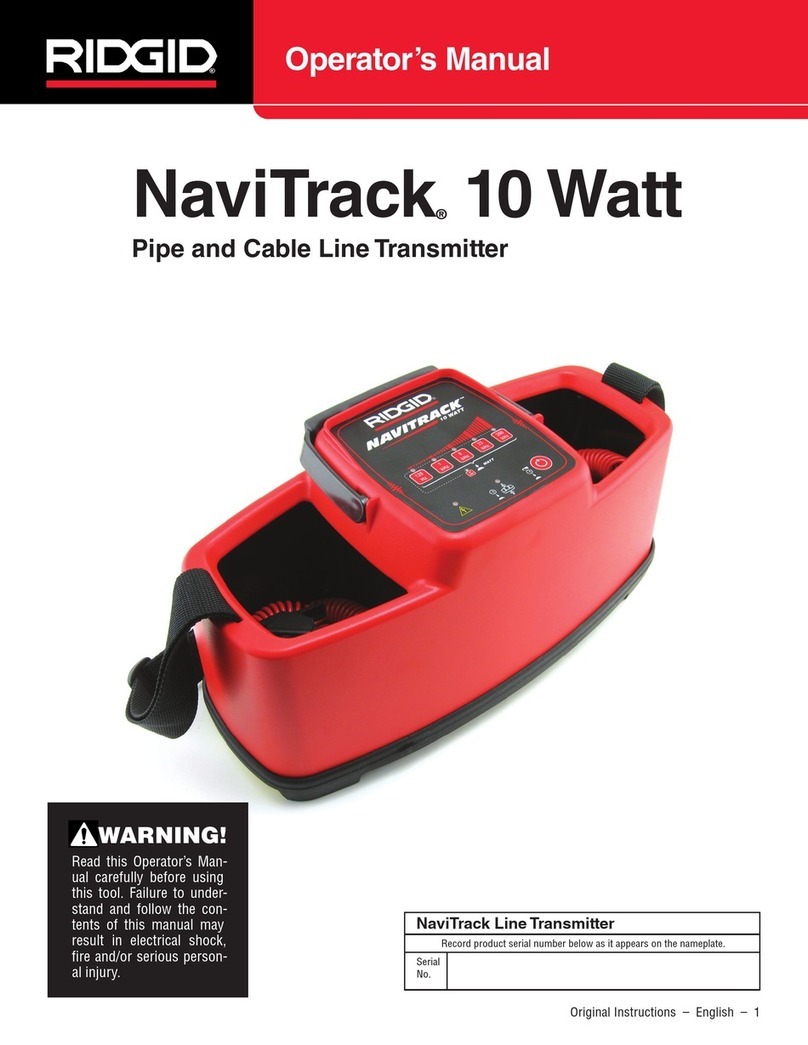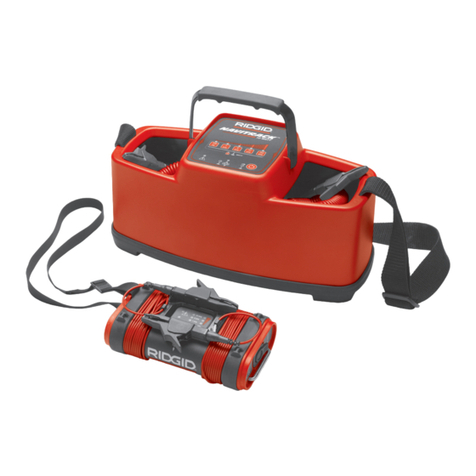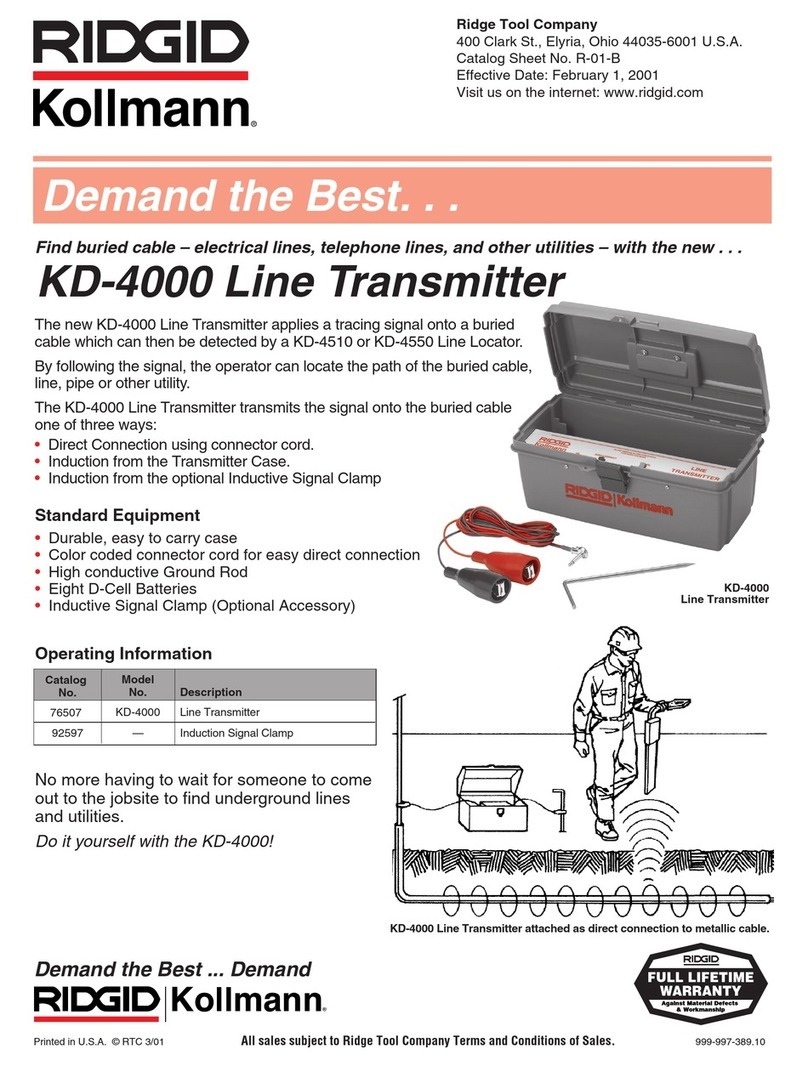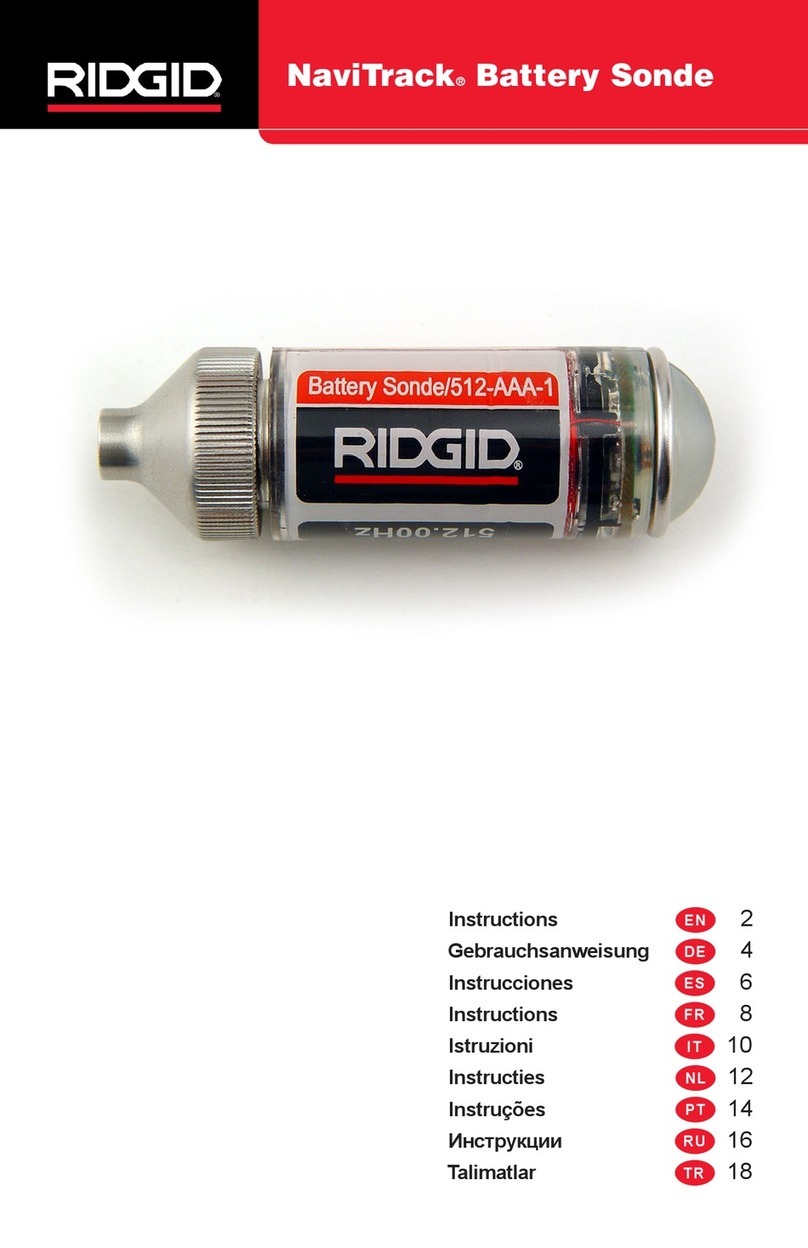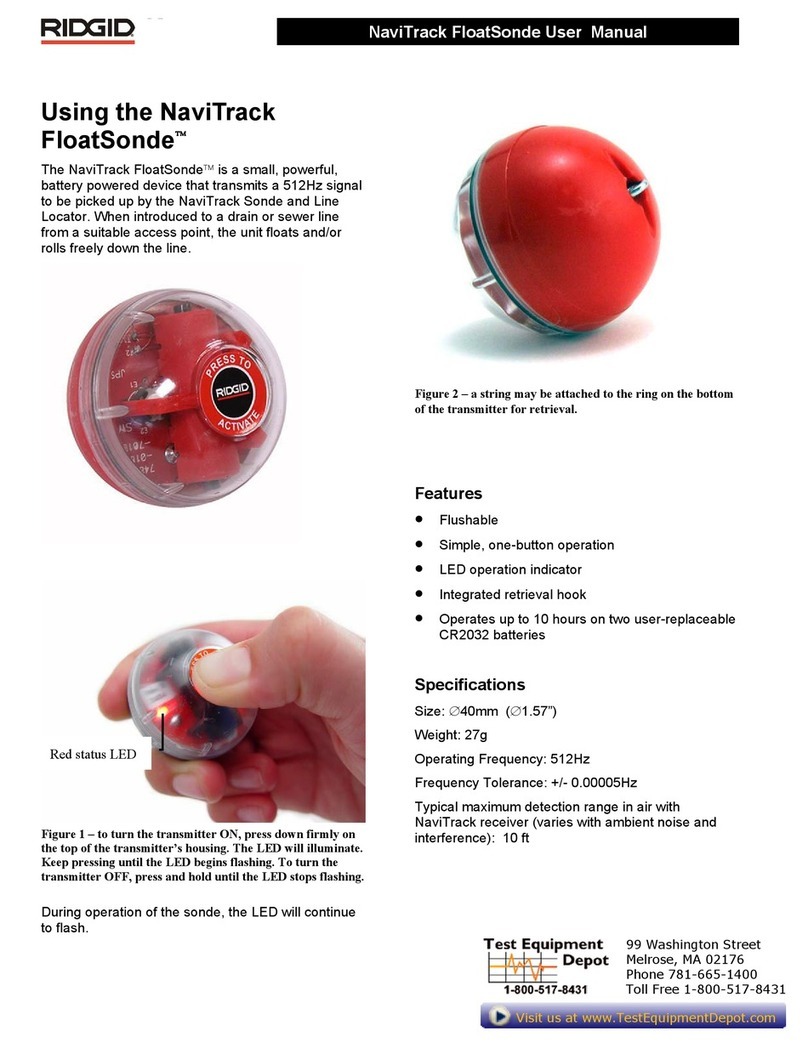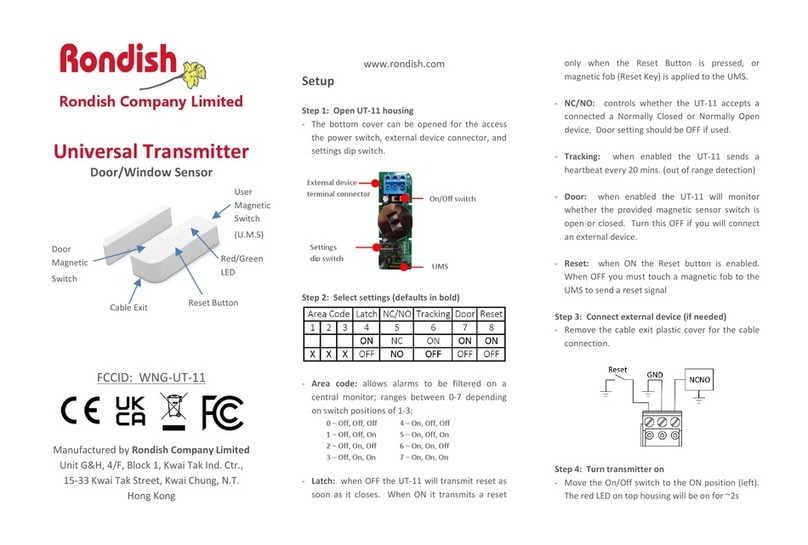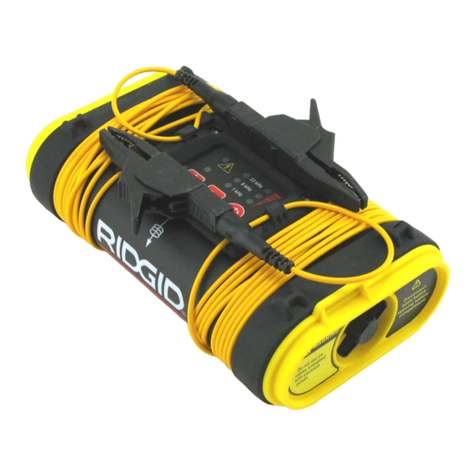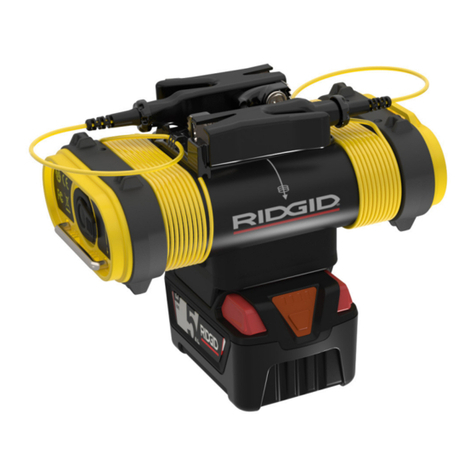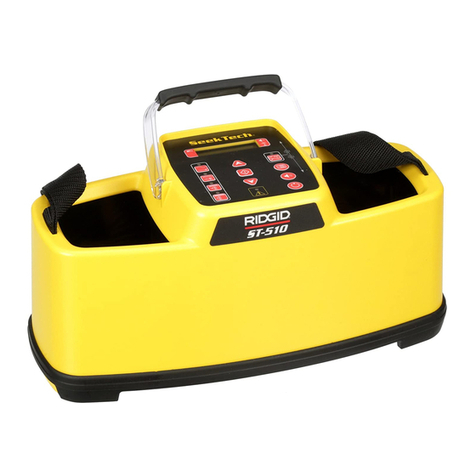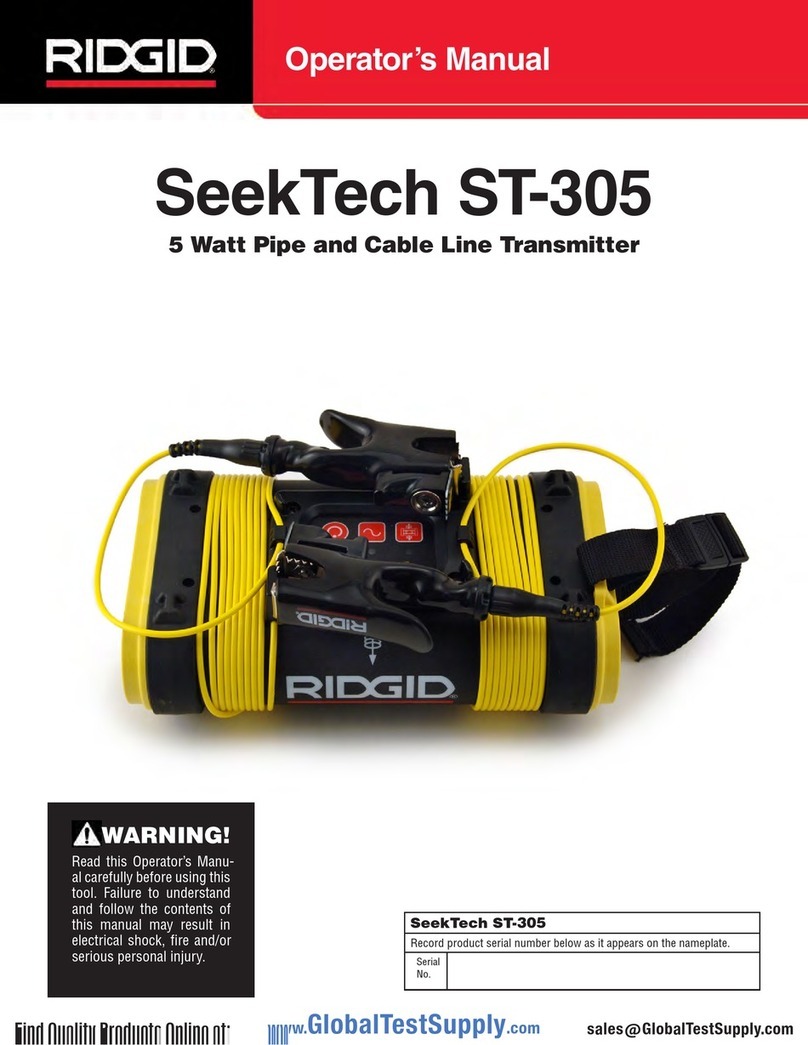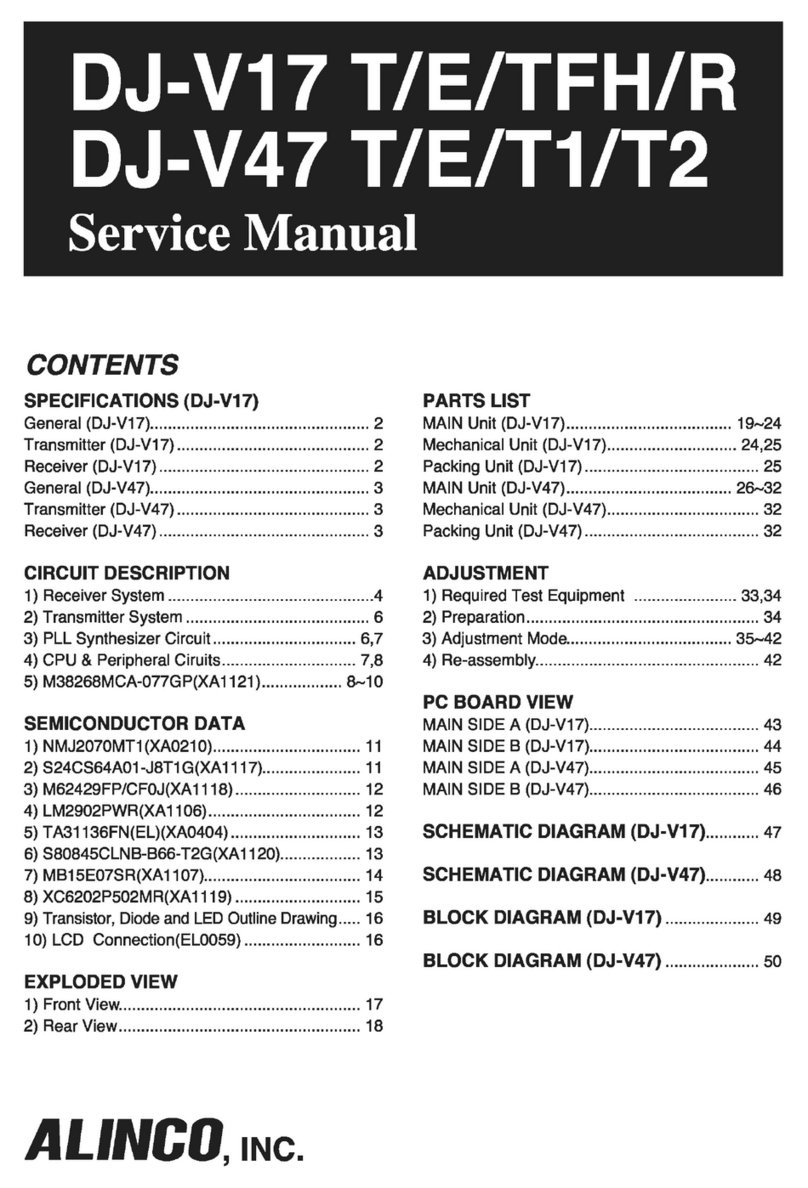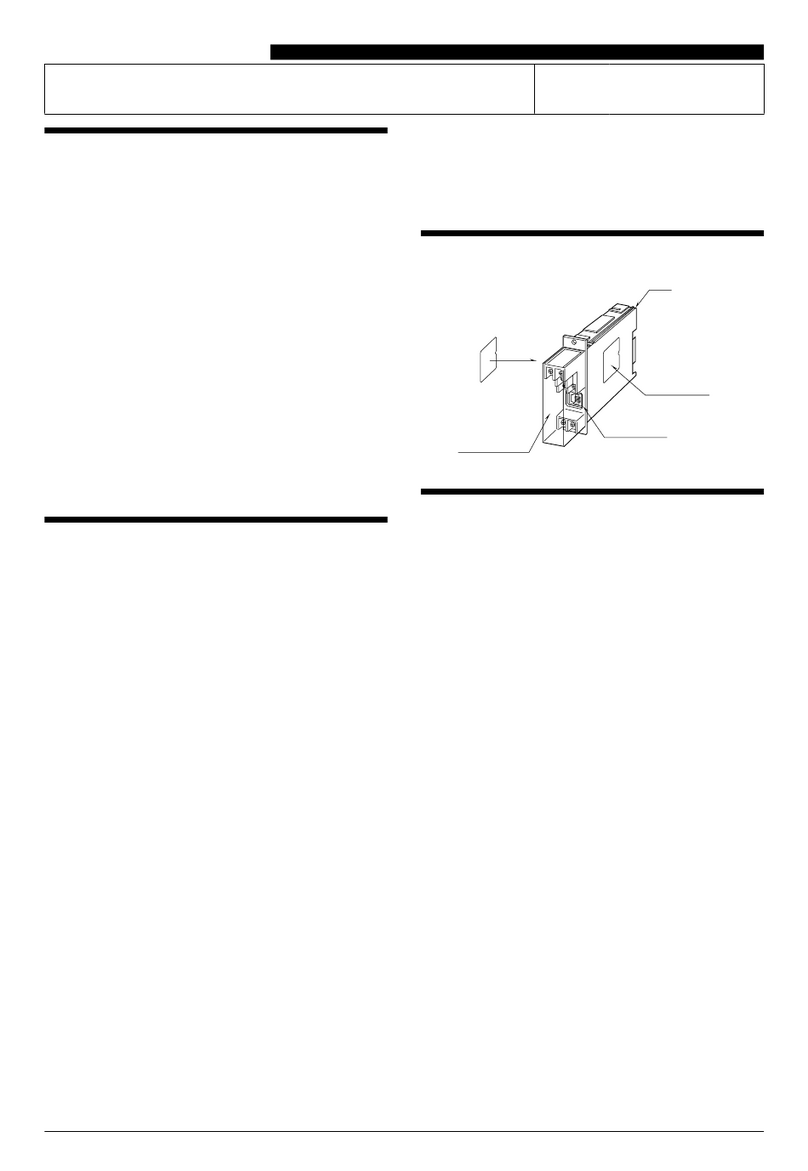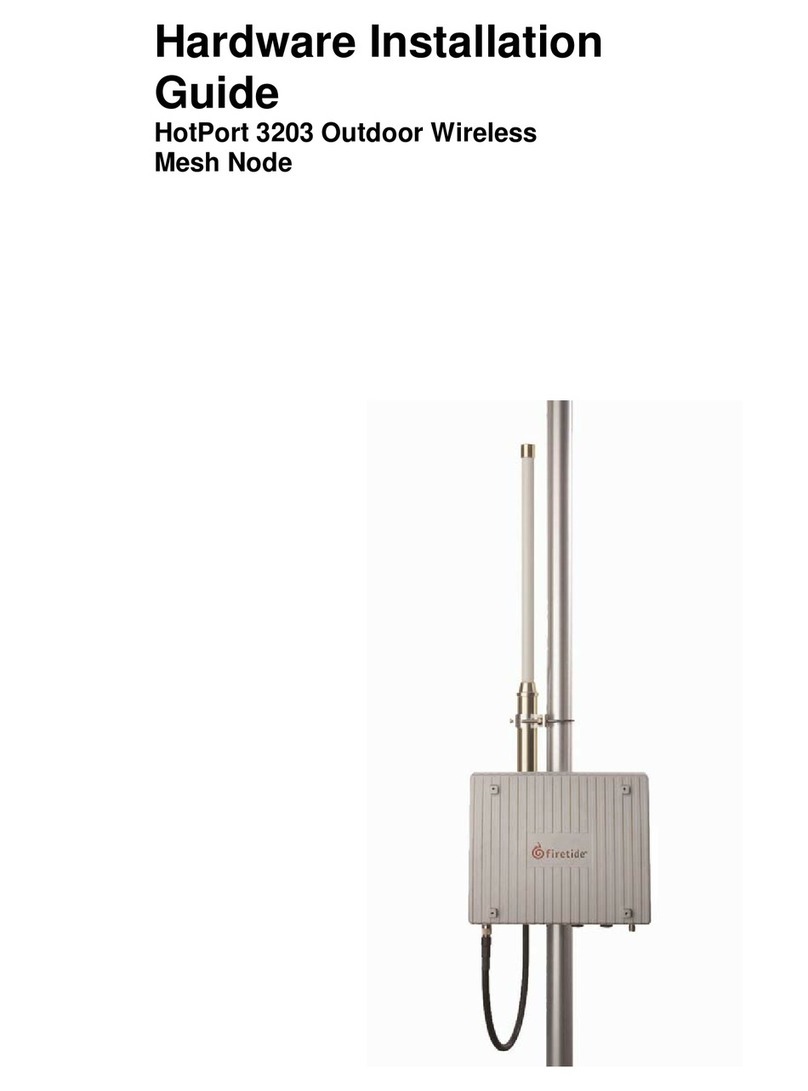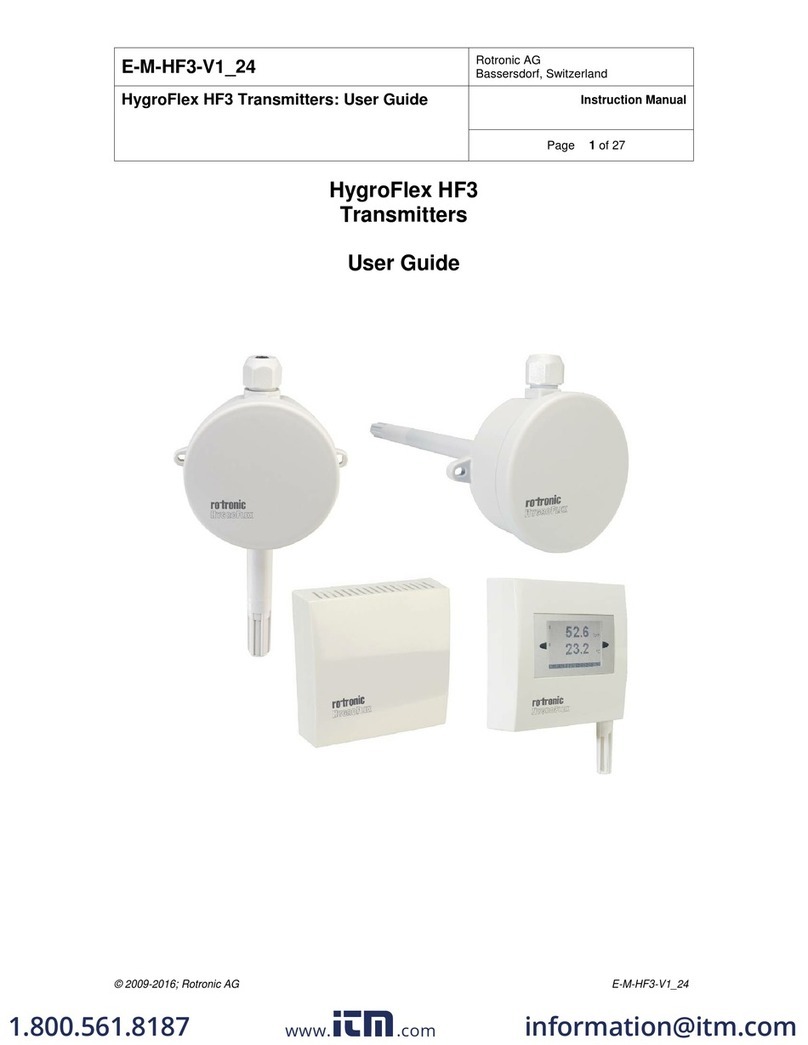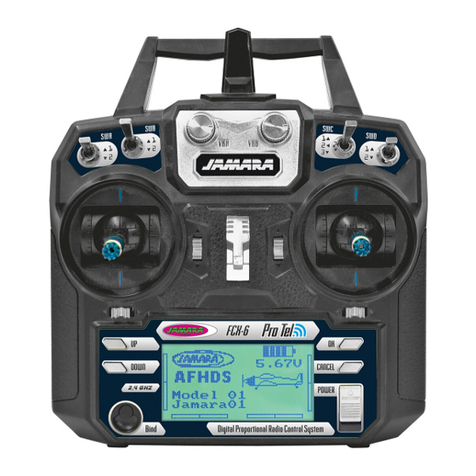
Ridge Tool Company 1
Tools For The ProfessionalTM
SeekTech®ST-305
• Exposing the utility is the only way to verify its
existence, location, and depth.
• Ridge Tool Co., its aliates and suppliers, will not be
liable for any injury or any direct, indirect, incidental
or consequential damages sustained or incurred by
reason of the use of the SeekTech ST-305.
DANGER
•ALWAYS HOOK UP LEADS FIRST BEFORE POWERING THE
UNIT ON TO AVOID SHOCK.
•ALWAYS TURN UNIT OFF BEFORE DISCONNECTING
LEADS.
•ELECTRIC SHOCK MAY RESULT FROM FAILURE TO
CONNECT LEADS BEFORE POWERING THE UNIT ON.
•Do not handle the transmitter while you are connected
directly to ground yourself.
•Wear appropriate heavy soled footwear as you would
when working with any high-voltage equipment.
NOTE: The line transmitter is normally powered by internal
batteries, and is designed to protect the user from voltages
up to 250 VAC that may be accidentally encountered. Battery
power is the sole power option available on the ST-305. The
High Voltage LED will light if the unit encounters more than
approximately 62 VAC (RMS).
WARNING: In compliance with Federal Standard
EN-50249, the ST-305 line transmitter is designed to
withstand up to 250 VAC 50/60 Hz excitation between
the two leads.
The user is cautioned not to deliberately connect to live
power lines. If the transmitter indicates the presence of
high voltage, use high voltage precautions to carefully
disconnect the line transmitter from the high voltage
source.
NOTE: The unit must be disconnected from any external
conductors before attempting to access the battery case or
change the batteries. The ST-305 is protected by an interlock
which isolates the unit when the battery case is opened, but
standard safety awareness dictates disconnecting the leads
rather than relying solely on this feature.
General Safety Information
WARNING! Read these instructions
and the accompanying safety booklet
carefully before using this equipment.
If you are uncertain about any aspect of using
this tool, contact your RIDGID distributor for
more information.
Failure to understand and follow all
instructions may result in electric shock,
re, and/or serious personal injury.
SAVE THESE INSTRUCTIONS!
CAUTION: Remove batteries entirely before shipping.
If you have any questions regarding the service or
repair of this machine, contact your Ridgid distributor,
your local Ridgid oce or Ridge Tool Europe at
In any correspondence, please give all the information shown
on the nameplate of your tool including model number and
serial number.
DANGER
•The SeekTech ST-305 is intended for use with a SeekTech
locator/reciever.Thelocatorisadiagnostictoolthatsenses
electromagnetic elds emitted by objects underground.
It is meant to aide the user in locating these objects by
recognizingcharacteristicsoftheeldlinesanddisplaying
them on the screen. As electromagnetic eld lines can be
distorted and interfered with it is important to verify the
location of underground objects before digging.
• Several utilities may be underground in the same
area. Be sure to follow local guidelines and one-call
service procedures.
GB
SeekTech ST-305
Operating Instructions

